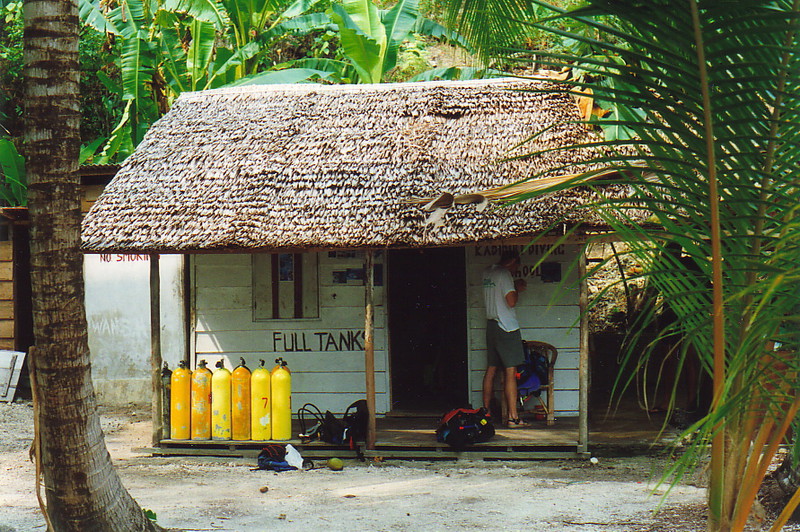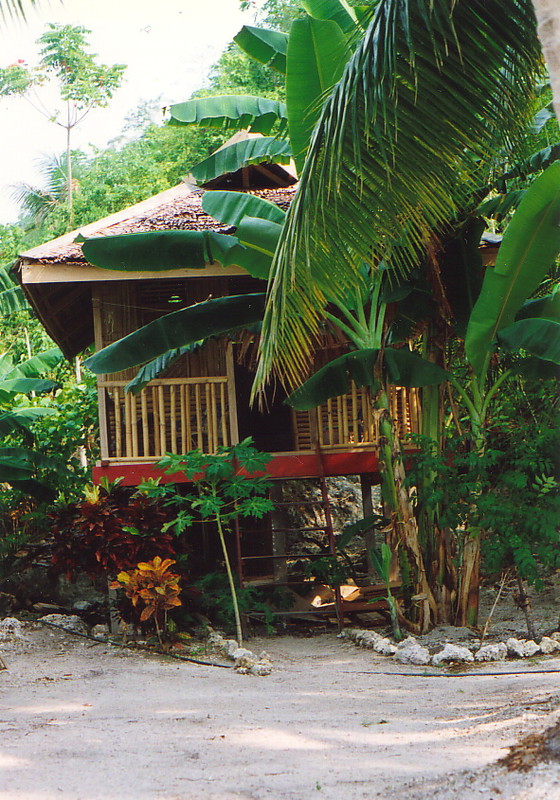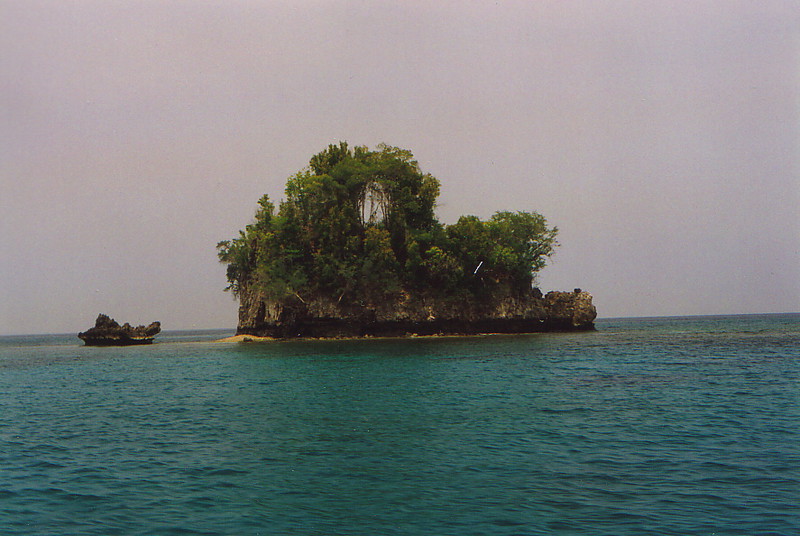
After recovering from my forest food poisoning, I took a long bus ride from Gimpu to Palu, then on to Poso and finally Ampana, where I managed to stay in the noisiest losmen I've ever been in; between the nocturnal cockerels, the cats on heat and the workmen who ripped the roof off my mandi at 7am, I was dog tired and ready for a rest. This proved to be fortuitous, because my ultimate destination, and the reason for the long bus journey, were the Togian Islands, an undiscovered paradise of coral-fringed islands just 25 miles south of the equator, sitting in the middle of the c-shaped bay formed by northern Sulawesi. After so long in French Polynesia I might not be that impressed by yet more beautiful islands, but in the Togians I saw a potential advantage: peace in isolation.
The Togian Islands are pretty much undiscovered territory as far as tourism goes. There are a number of beach losmen dotted around, and the clientele is almost exclusively western, but in terms of mainstream tourism, the Togians are well off the beaten track.
I suspect this won't be the case for much longer. If you manage to ignore the fairly typical and disgusting town of Wakai – smelly, dirty, environmentally hopeless and only there as a port for the boats sailing to and from the mainland – the Togian Islands are relatively untouched, though trends such as fish bombing and hunting the almost extinct coconut crab are symptoms of a worrying lack of foresight. There are six main islands, plus the recently erupted volcano of Unauna, as well as countless tiny islands dotted all around, and with the lush vegetation and beautiful blue sea it's a perfect place for paradise.

The big attraction of the Togian Islands is the large amount of good coral reef surrounding the islands, and it's one of the few areas in the world where all three main types of reef are found: barrier reef, atoll and fringing reef. I met a couple of fascinating travellers in Ampana who had been hiking through Sulawesi in search of very rare pitcher plants, and we teamed up to take the ferry to the Togians, all in search of some relaxation; our destination was Kadidiri Island off the north coast of Togian Island itself. What we didn't realise was that Kadidiri Island was also home to the only diving operator in the Togians.
Living on the Togian Islands was Paul, our Australian dive master, but that wasn't Paul's most distinguishing feature: that would be his long blonde dreadlocks, something of a unique sight in an island community full of Indonesians. When Paul first arrived in the Togians, he would visit Wakai, the main village on the islands, and the kids would run up to him and shout, 'Hello mister, what's your name?'
Before long everyone in Wakai got to know Paul: the shopkeepers, the ferrymen and the hotel owners. He'd been there for eight months when I met him, and when he walked down the street, the kids still ran out and followed him. And what did they say to Paul when he walked down the street after eight months?
'Hello Paul, what's your name?'
Diving in the Togians

With all that reef about, it turned out to be a wonderful opportunity to throw off all the cares of the outside world, and enter the silent world of scuba. During the four days I spent in the Togians, I went on two dives. The first was easily the most amazing: a B-24 bomber had come down in the sea off the south coast of Pulau Togian back in 1945, and it's a pleasant 20m below the surface, perfect for diving. It's now encrusted in coral, and exploring a wrecked but pretty intact plane at the bottom of the sea is an amazing experience, especially when the water at 20m is a balmy 29°C. Everything is covered in growth, not surprisingly after over 50 years, but it's amazing how much is almost untouched: the pilot's throttle controls, the engine's radiator fins, the machine guns, the landing gear and so on are all instantly recognisable, and living on this plane-shaped reef are plenty of weird and wonderful marine creatures. Diving the site was a clash of history, surrealism and imagination, where you could almost hear the conversation as the crew prepared for crash landing, an event that they would all survive, to be rescued by the inhabitants of the local fishing village of Liberty. It was my first wreck dive, and hopefully not my last.
After a day's snorkelling the following day – a poor man's second when you've learned to dive, but a worthwhile occupation when the coral is just off the hotel beach – I decided that the budget could stretch to another dive, so the next day I joined the others for a dive in the Labyrinth, a more standard coral bommie dive that was nonetheless very pleasant.
The two Togian dives were just what I needed, and they acted as a catalyst to relieving the accumulated travel stress and fatigue that Indonesia has so far piled onto my shoulders. It also helped that the place was seriously relaxed; for example, our last night on the island coincided with the full moon, so out came the beer and the arak (rice wine) and, when the arak had run dry, out came the Indonesian vodka. I passed out on the beach by the fire, and the next day awoke with a familiar feeling: I was still quite drunk. Which was just what I needed for a long bus ride through bumpy Sulawesi... though even through the haze of the morning after, I was sad to see Kadidiri disappear over the horizon, as I now felt properly recharged.